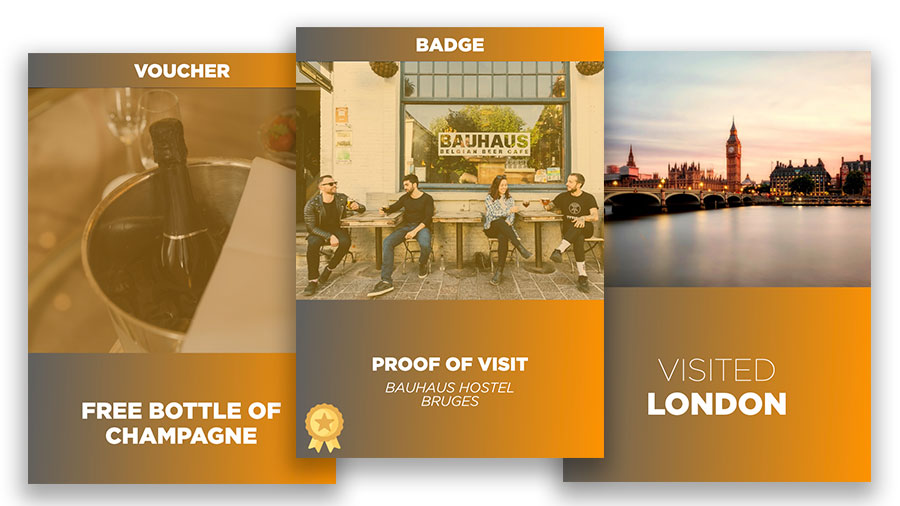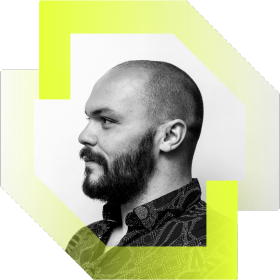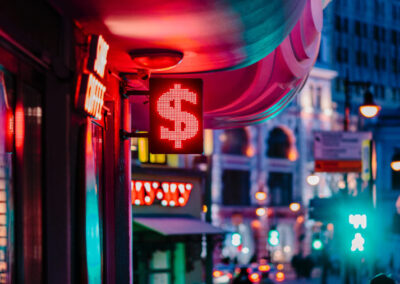NFTs provide much-needed modernization in Customer Loyalty programs for the hotel industry. NFTs leverage decentralized blockchain technology to enable a more individualized customer experience, because of their uniqueness, scarcity, collectability, exclusivity, and transferability. These little digital wonders make customer loyalty programs cool again, and create a rather appealing hospitality experience.
The start of loyalty programs in hospitality
1983. What a year. The so-called ‘hair metal’ sub-genre was in its heyday. Fledging bands and starry-eyed groupies alike walked down LA’s Sunset Strip, strutting their stuff after dark. Also in this year, the United States invaded the island of Grenada, and Mario Bros’ arcade machine made its first appearance.
1983 was a particularly significant year for the hospitality industry, as the first customer loyalty program was introduced, by the Holiday Inn chain, to be precise. Originally dubbed ‘Priority club’, the idea was to keep customers coming back to Holiday Inn establishments by offering rewards and perks for returning customers. (The Priority Club was rebranded as IHG Rewards Club in 2013, when the Holiday Inn chain became InterContinental Hotel Group.)
It worked. Soon, all hotel chains introduced similar programs. (Marriott opened its own loyalty program the same year). Nowadays, customer loyalty initiatives in hotel chains are commonplace across the hospitality industry and elsewhere. Pop down to your local franchised coffee outlet and you’ll probably be given a little card with spaces for staff to mark every time you buy a coffee. The fifth cup might be on them.
How customer loyalty programs work
As a marketing strategy, a customer loyalty program is rather straightforward. These programs aim at enticing customers to stay at a particular brand or group by offering incentives to do so. These could be room discounts, perks, room upgrades, etc. The more often you stay, the more points you get, enabling you to move up tiers and unlock better rewards over time. A customer loyalty program is good for the hotel, as it drives occupancy, and for the customer, who feels like they get something for their continuous business.
Tokenising loyalty
1983 is long gone, and so are, thankfully, those big and flamboyant hairdos. It is 2022 now. Hairstyles are more subdued, and today’s customer loyalty programs are powered by tokenisation.
In today’s technology-savvy world, we understand tokenisation as the process of turning sensitive data into non-sensitive data tokens that can be shared or traded without compromising the underlying information. Banks use tokens to transmit banking details to a payment processor, for example, to prevent data breaches.
But tokenisation itself is a concept as old as mankind itself. Clay tokens used to count, store, and communicate financial data are known to have been used circa 4,000 BC in regions today known as the Middle East. Early tokens were individual pieces made in different sizes to represent quantity. Later, the tokens would be etched with lines or dots to denote the quality of whatever they represented. Ancient Egyptians, for example, would use tokens carved out of wood pieces in the shape of a loaf of bread or a jug of beer. In later centuries, copper tokens would be used as rewards for purchasing certain items. These tokens could be exchanged for other goods or services.
In simple terms, a token is a representation of value that the customer uses to access certain perks, goods, or services.
Non-fungible tokens (NFTs) as loyalty rewards

Customer loyalty programs play a key role in customer retention and engagement. But any such program is only as good as the rewards it offers.
NFT rewards provide a range of benefits, including:
- Uniqueness – The very nature of NFTs means that they’re scarce and unique, i.e., valuable. This confers them with a sense of exclusivity, enhancing the overall customer experience.
- Low cost – NFTs are digital assets that are relatively easy and cheap to produce, so the brand does not need to invest massive amounts of money into the program at the outset.
- Ownership & Transferability – The NFT is owned by the guest and they can do with it what they want. They can even share the rewards, trade, or sell the NFT. This opens up a secondary market. They could even lock it up and earn staking rewards.
- Brand evolution and community building – Brands need to adapt and evolve with the times if they’re to survive. NFTs enable this digital evolution, as they leverage new technological trends. As an added benefit, brands using NFTs as loyalty tokens facilitate their customers to build a community around the brand itself.
Potential use cases for NFTs in hospitality
At this point in time, certain use cases for NFTs in hospitality remain in the theoretical realm, either because the technological framework isn’t really there yet, or simply because of a lack of trust and/or understanding of the true potential of NFTs.
Focusing on the hospitality industry in particular, NFTs center around the concept of ownership, which is an inherent trait of these digital assets anyway. Whether we discuss NFTs for art (be it music, cinema, paintings, etc.) or book rights, it all comes down to ownership.
For hotels specifically, there are three major potential use cases:
- Repeat customers
- Collectibles
- Room tokenisation in the metaverse
Repeat customers
NFTs are often associated with gamification. There is a fun, game-like element to buying (or earning) NFTs to collect or to use elsewhere. For example, imagine someone staying in a hotel for a few nights. They might get a drink or three at the bar, have a meal, visit the hotel’s gym, buy souvenirs at the shop, etc. Maybe every time the customer checks into a hotel of a particular chain, they get an NFT. And every time they go to the bar, or the restaurant, or have a swim at the pool, their NFT might accrue experience. Eventually, the NFT will reach a higher level, which might unlock better perks, like two for one drink promotions, or extra time at the gym.
This gamification element is exciting, and incentivises the person to always go back to that particular chain so they can reach the next NFT level and get better rewards.
Also, the issue of transferability comes into play. Maybe a friend, partner, or family member decides to visit the same hotel chain. Maybe you can share your NFT with them, and they might contribute to earning more experience, and therefore helping you to get better rewards sooner.
The bottom line with this use case is that the NFT helps to keep the customer returning to the same hotel chain over and over, something that benefits both parties, the hotel and the customer, because both get something out of it.
Collectibles

One of the most attractive things about NFTs is that they’re unique, and therefore highly collectible. So for example, if there are 10 hotels in a chain, each hotel might give its customer an NFT. This means that customers would need to visit all 10 hotels in that chain to get the full collection. Again, we get into gamification territory. Once the customer collects all 10 NFTs, they might become automatically entitled to a free stay in any hotel of that chain, for example, or a room upgrade, or restaurant voucher, discounts. For example, when you stay in a certain room, you get an NFT that gives you a discount for another stay. If you don’t want this discount, you can then go on a marketplace and sell or trade it for others. The possibilities are endless.
Room tokenisation in the metaverse
This is perhaps one of the most ‘out there’ use cases, one which, for now, remains in purely speculative territory.
Metaverse is one of the hottest topics in the technological world right now. Some big players are considering, or actively building, metaverse environments.
That metaverse will be, presumably, full of people. Virtual people, to start with. Avatars. And these avatars will need to stay and live somewhere. This is where virtual real estate comes into play. Some of the bigger hotel chains might want to have a property stake in this nowhere land. These virtual hotels could use a tokenisation-as-a-service business model, so multiple people could own part of that hotel. We published an article on this very topic some time ago.
Conclusion
Customer loyalty programs are powerful marketing tools, yes. But the mechanics of such programs haven’t really changed that much since the days of the Priority Club, back in the early 80s. Customers are offered points per stay, customers spend those points during their next stay, and that’s about it. Most programs work in much the same way. In other words, there’s little to differentiate one loyalty program from another. One could argue they’re outdated and in need of a modern update.
Blockchain technology creates incredible opportunities that add a new layer to your guest experience. At Zaisan, we offer NFT project management and can take care of the complete technical and legal framework.




